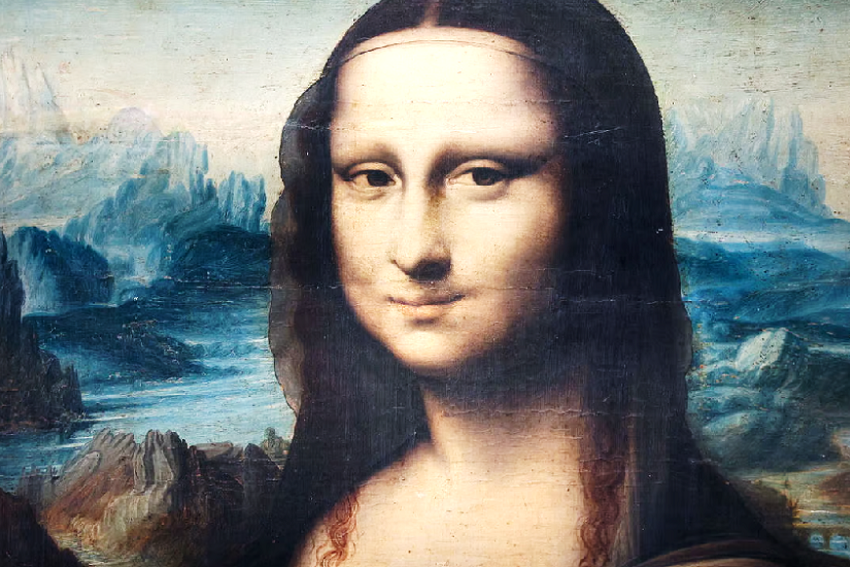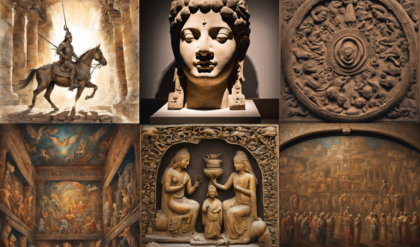Introduction to Mona Lisa
Without doubt, Mona Lisa is one of the most famous and enigmatic painting in the world. Originated from the legendary polymath Leonardo da Vinci in the early sixteenth century and has since attracted considerable interest for half a millennium.
The technical excellence of the painting and the mystery behind the woman represented in it have invited a myriad of speculation and interpretation. This image in particular sums up not only the creativity of Leonardo but also the mystery of the man depicted and the ability of art to create an intrigue that can last centuries.
Creation of a Masterpiece

Leonardo da Vinci’s Vision:
True to his style, Leonardo incorporated into the Mona Lisa all his knowledge of science, nature and the human body. The subtle and delicate details of light, depth and anatomy of the sitter were captured thus creating a realistic portrait. Despite the pose of Mona Lisa being one of the most basic and the look on her face being rather mysterious, Leonardo was able to create an unchanging depth of this woman that would still interest people to this day.
Technical Brilliance:
Besides, being a gifted artist, Leonardo took risks in painting the Mona Lisa to come up with an artwork that has never been seen before. He used the pyramid structure and the special perspective to make the audience pay attention to Mona Lisa’s face. He also invented a new technique of preparatory underpainting and glazing which gave the work unprecedented luminosity and intensity of tone. These innovations enabled him to depict the textures and details of the painting to an extent that was rather revolutionary for the period.
The Secret Behind the Smile
The Enigmatic Expression:
Mona Lisa has that mysterious and rather pleased with herself smile on her face. This, when added to the sideward look she gives in the portrait, makes the piece very mysterious. She smiles and looks directly at the viewers in a manner that can be interpreted as mischievous or as if she’s in on some joke that no one else is privy to. The fact that the author can never know her thoughts and feelings is a major motivation of the painting’s fascination.
Psychological and Artistic Interpretations:
This is because the facial expression of Mona Lisa is not clear and has been the subject of many debates and controversies regarding her true feelings. Some see her as happy or confident, while others see anxiety or sorrow reflected in her face. Subsequently, psychological theories about Mona Lisa’s state of mind have been imposed on the painting. Thus, the secrets of art may remain beyond the reach of comprehension and yet, this is the very reason behind the popularity of da Vinci’s work and his enigmatic muse.
The Identity of Mona Lisa
The Woman Behind the Portrait:
They argue about the true identity of Leonardo’s muse, assuming she could only be a lady from Florence of the highest rank. However new research now points to the fact that she could have been Lisa Gherardini, married to a rich silk merchant. That she was an everyday woman of her age goes against past exoticized narratives, but knowing makes the bond with one of history’s most famed figures more engaging and personal.
Why the Identity Matters:
People also know that there is a story behind the face in the painting and this means that they can form a closer relationship with the painting. It turns the Mona Lisa from an unreachable mystery to a real woman of the Italian Renaissance. It also helps to explain all the things ranging from the regional costumes and hairdos depicted in the painting to Leonardo’s method of working with models. While some questions remain unanswered about the painting, the identity of the lady contributes to a better understanding of the legend behind the Mona Lisa painting.
The Journey of the Mona Lisa
From Private Commission to Public Icon:
This image was initially created by Leonardo for his personal enjoyment and not due to a commission. He brought the Mona Lisa with him to France in 1516 when he was invited by the French king, François I. The latter liked it instantly and it stayed in French royal collections for more than 200 years. It was then exhibited after the revolution and now is a part of the collection of the Louvre Museum. This shift from a personal piece of art to a piece of art seen by millions of people all over the world is one testament to its cultural rise.
Theft and Recovery:
again in 1911 the painting was stolen from the Louvre Museum by Vincenzo Peruggia and taken away from the museum walls. This caused an uproar around the world and led to the launch of one of the largest investigations ever seen. After that, its location was not known for two years, until an Italian house painter named Peruggia tried to sell it back to Italy. It only served to bring more attention to the painting and the legendary Mona Lisa. Today, more than six million people come every year to see it encased behind bulletproof glass at the Louvre, as if just to be sure that she is back home where she belongs.
Worldwide Recognition and Popular Culture Impact
Symbol of Artistic Genius:
Among all of the works of Leonardo da Vinci, the Mona Lisa has become the defining image of artistic achievement. The skillfulness of its realization accompanied by its mystery has become the essence of genius in the field of the visual arts: for art historians and the general population, she embodies the highest achievement of the human brain and fingers.
The Mona Lisa in Pop Culture:
This is particularly the case because the 20th century witnessed the Mona Lisa becoming more popular in popular culture than ever before. She was the inspiration of Dada and Surrealism painters like Duchamp and Salvador Dali to the cheap object of tee shirts and coffee mugs. It is used not only in advertisements and cartoon characters but also in movies like The da Vinci Code. appropriated, reinscribed, or ridiculed, she remains utterly inscribed within mainstream culture.
The Enduring Mystique
Why the Mona Lisa Captivates Us Still
People cannot take their eyes off the artistic masterpieces that create the feeling of mystery, and psychological depth in the hearts and minds of the audience. The mystery of the Mona Lisa can be seen in the fact that we can almost feel the existence of the unseen and the inner character of a 16th century homemaker who has been depicted in the painting. In the gestures that Leonardo drew from this rather bland subject we discern passion, tenderness, and intrigue.
Legacy in the Art World:
The runaway recognition that the Mona Lisa quickly gained would alter how viewers and portraits connect. Thus, by creating the format as an intellectual and metaphorical construct, Leonardo made the portrait acceptable for philosophical discourse. He made the portrait the study of a man’s soul and he also vindicated the small easel paintings as artworks worthy of a philosophical reflection. As can be seen, the innovations introduced by Leonardo are still effective in the field of portrait painting even today.
Conclusion
The documentary of the Mona Lisa represents a story of intellectual mystery, dauntless artistic creation, theft, and restoration, as well as globalization. Leonardo da Vinci’s enchanting lady has seamlessly interlocked herself in the annals of art history and pop culture for eternity. Her origin, personality and even the sly smile that she gives may remain fascinating questions. But works of art which are timeless and universal, and which are able to bring people closer to the spirit, remain everlasting. That is precisely the point – to depict all the human essence in the frame of a small painted panel, Leonardo managed to capture the very spirit of lightning.





